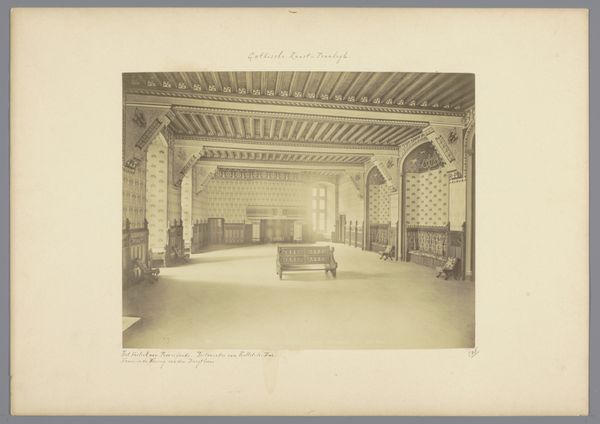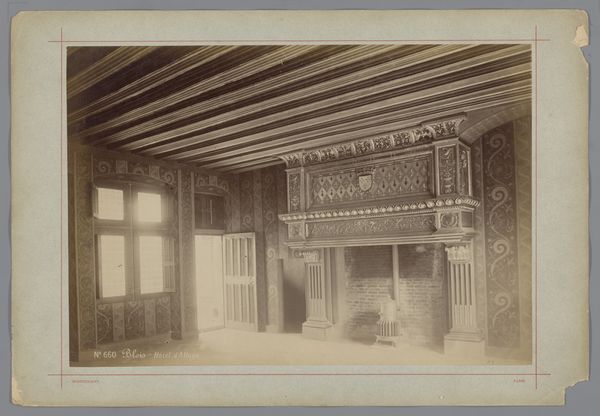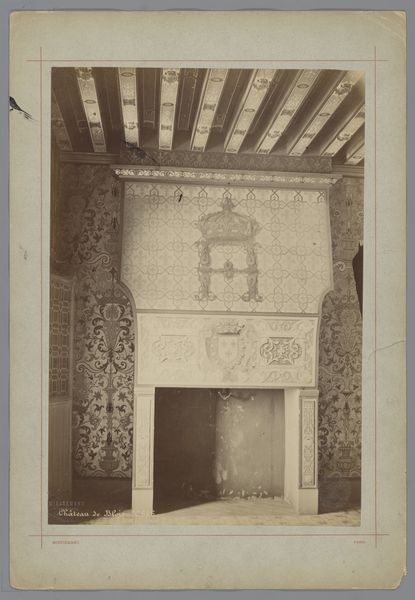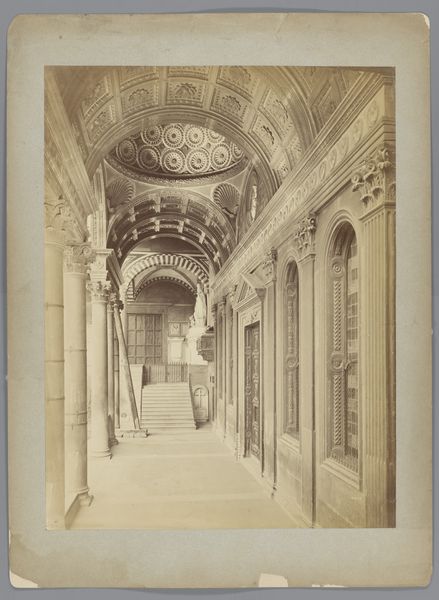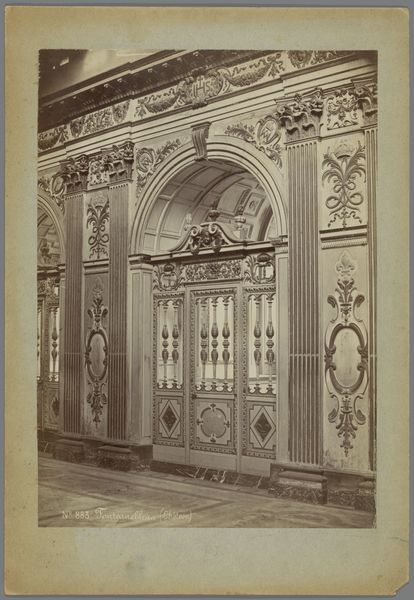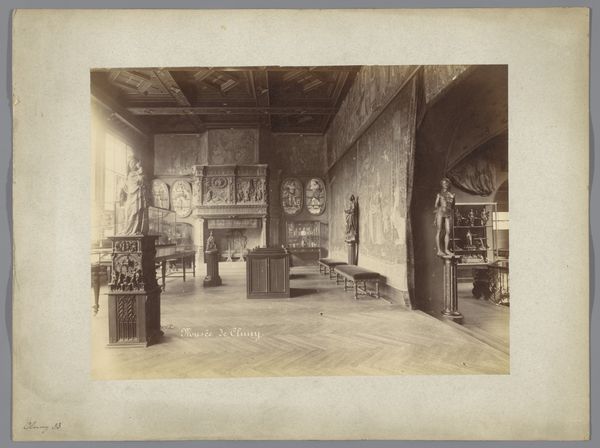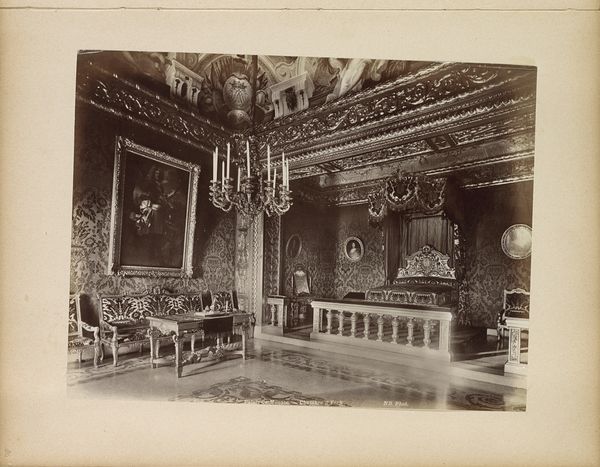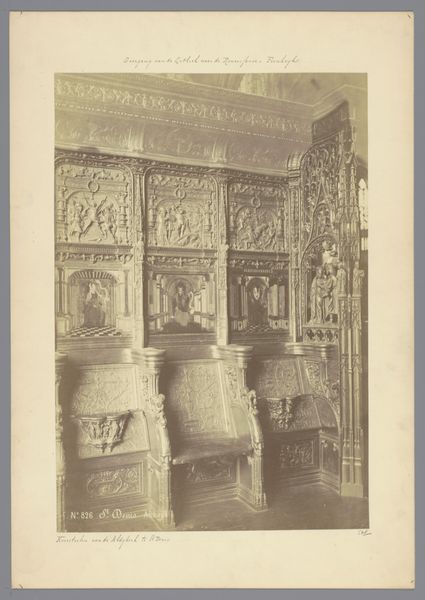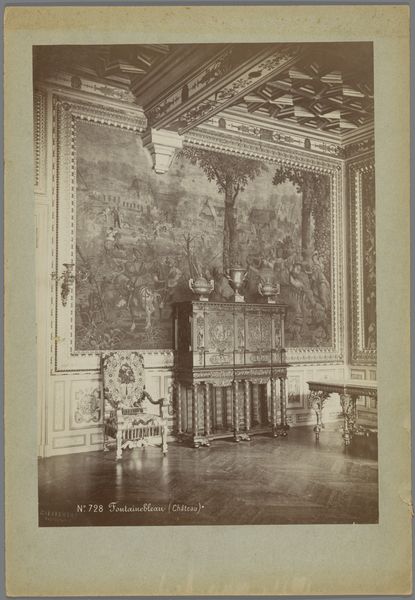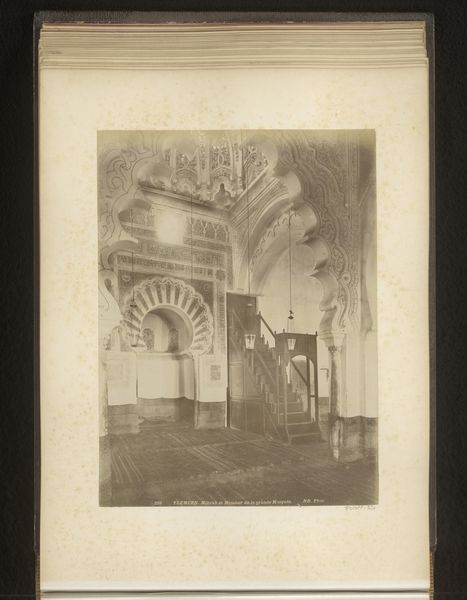
Interieur van de ontvangstzaal in het Kasteel van Pierrefonds c. 1875 - 1900
0:00
0:00
medericmieusement
Rijksmuseum
photography, albumen-print
#
landscape
#
photography
#
academic-art
#
albumen-print
Dimensions: height 371 mm, width 273 mm
Copyright: Rijks Museum: Open Domain
Curator: Before us, we have an albumen print by Médéric Mieusement, created circa 1875-1900, titled "Interieur van de ontvangstzaal in het Kasteel van Pierrefonds"—or, "Interior of the reception hall in the Castle of Pierrefonds." Editor: It’s immediately striking, isn't it? All of this meticulous detail... but it feels so empty, almost ghostly. A grand space rendered silent and still. Curator: Indeed. Mieusement was documenting architectural landmarks at a time when photography was becoming a powerful tool for cataloging and promoting national heritage. The Castle of Pierrefonds, having undergone extensive restoration by Viollet-le-Duc, was a potent symbol of French imperial ambition, even revivalism. This image, you see, circulated widely. Editor: And what strikes me is that wallpaper. Repeated fleur-de-lis patterns, endlessly receding…it whispers of the old French monarchy, power carefully woven into the very fabric of the space. Each emblem is meticulously rendered but drained of vibrant color. The muted tones create an almost dreamlike state. Curator: Precisely. These visual elements highlight a broader conversation concerning legitimacy and national identity. Napoleon III commissioned the renovation, using the castle as an Imperial residence meant to evoke the grandeur of the past in support of the present regime. The imagery reinforced a narrative. Editor: There’s a tension in this room that almost comes from the stillness. All that heavy carving, the formal structure, the suggestion of life once bustling within it but here, it echoes an age already slipping away, doesn’t it? Almost like history is put on stage to be consumed, the icon becomes more important than function. Curator: Absolutely. These interior photographs of Pierrefonds served less as mere records than carefully staged representations of power and the appropriation of history for contemporary political needs. This one could almost act as stage. A constructed image designed for a specific audience and ideological goal. Editor: Looking closer, you almost wonder what rituals, or at least receptions, took place within it and now what meaning that visual legacy still leaves, knowing how it would transform over time? Curator: It invites us to contemplate not only the architecture but also the powerful role images play in shaping perceptions of history and culture. Editor: Well, thank you for elucidating the piece.
Comments
No comments
Be the first to comment and join the conversation on the ultimate creative platform.
